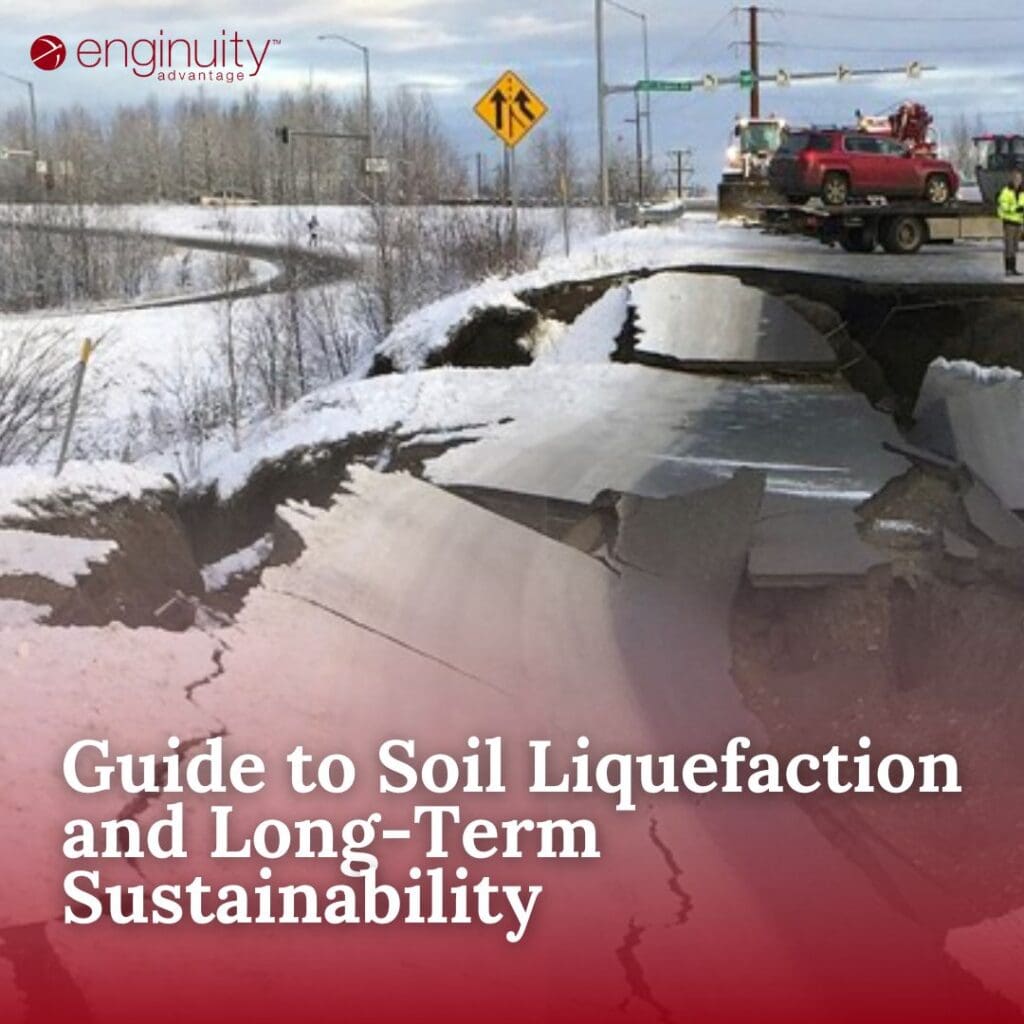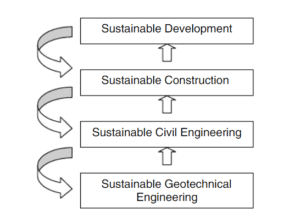Guide to Soil Liquefaction and Long-Term Sustainability

The ground beneath our feet is more than just dirt—it’s a complex system that holds the key to the stability of our built environment. Among the various challenges faced by engineers and builders, soil liquefaction stands out as a particularly pressing concern. Recent studies indicate that over 60% of the world’s major cities are located in areas of potential liquefaction. Especially in regions like Washington, where an estimated 15% of the land area is susceptible to this phenomenon, understanding soil liquefaction is not just a technical requirement but a critical safety imperative.
As construction projects continue to expand in such high-risk areas, the importance of addressing and mitigating the threats posed by soil liquefaction becomes paramount. This guide delves into the intricacies of this phenomenon, its implications for the construction industry, and the strategies geotechnical engineers employ to ensure long-term sustainability.
Understanding Soil Liquefaction
Soil liquefaction occurs when saturated soil loses its strength and stiffness due to applied stress, usually from an earthquake, causing it to behave like a liquid. In areas with loose, water-saturated soils, the ground shaking can cause the soil particles to lose contact with one another, leading to a sudden decrease in soil strength.
Regions like Washington, with its rich history of seismic activities, are particularly vulnerable. The state’s unique geology, combined with its wet climate, makes it a hotspot for soil liquefaction risks. For construction companies and geotechnical professionals, this presents a dual challenge: ensuring immediate safety and guaranteeing long-term sustainability.
Sustainable geotechnical practices aim to minimize harm to the environment. By adopting sustainable approaches such as using environmentally-friendly materials, reducing carbon footprint, and implementing proper waste management, geotechnical engineers can contribute to the conservation of ecosystems, habitats, and biodiversity.
Risks Associated with Soil Liquefaction
When soil liquefies, it can lead to a range of problems, both immediate and long-term. Here are the primary risks associated with soil liquefaction:
- Ground Shaking: One of the most immediate effects of soil liquefaction is the intense shaking of the ground. This can lead to the destabilization of structures and infrastructure.
- Ground Settlement: After the liquefaction event, the soil can settle unevenly. This differential settlement can damage buildings, roads, and other structures, leading to costly repairs or even total loss.
- Lateral Spreading: Liquefied soil layers can move horizontally, especially on gentle slopes or towards free faces like riverbanks. This lateral movement can result in large ground displacements, tearing apart roads, pipelines, and other infrastructure.
- Bearing Capacity Failure: Structures that rely on the bearing capacity of the soil can experience sudden and catastrophic failure if the soil beneath their foundations liquefies.
- Tilting and Toppling of Structures: Buildings and other tall structures can tilt or even topple over if the ground beneath them liquefies and moves.
- Floating of Underground Tanks: Buried structures, like septic tanks or underground storage tanks, can float to the surface if the surrounding soil liquefies.
- Sand Boils and Ejection: The pressure build-up can force water and sand to the surface, creating sand boils or volcanoes. This can lead to deposition of sand on the surface, making areas unsuitable for construction or farming.
- Damage to Infrastructure: Roads, bridges, railways, and pipelines can suffer severe damage due to ground deformation caused by liquefaction. Post-earthquake assessments have shown that nearly 30% of infrastructure failures can be attributed to liquefaction.
- Increased Vulnerability to Flooding: Liquefaction can alter the topography of an area, making it more susceptible to flooding, especially if it leads to the blockage of drainage paths.
- Loss of Ground Support: Embankments, dams, and retaining walls can lose support, leading to their collapse. In fact, damages from soil liquefaction account for approximately $10 billion in losses globally each year.
- Disruption of Utility Services: The movement of the ground can break water, gas, sewer, and electrical lines, leading to service disruptions and potential hazards.
- Economic Impact: The damage to infrastructure, buildings, and utilities can have significant economic implications, including repair costs, loss of property value, and disruption of business activities.
- Safety and Health Risks: Collapsing structures, broken utility lines, and the spread of contaminants due to damaged sewage systems can pose direct threats to human safety and health.
Ensuring Long-Term Sustainability
For geotechnical engineers, understanding and mitigating the risks of soil liquefaction is crucial. Here are some strategies:
- Site Assessment: Before construction, conduct thorough soil tests to determine the potential for liquefaction. This helps in understanding the soil profile, water table levels, and potential liquefaction risks.Studies show that accurate site assessments can reduce potential damages by up to 40%.
- Soil Improvement Techniques: Employ methods like vibro-compaction or deep soil mixing to increase soil density and reduce water content. These techniques have been shown to reduce liquefaction potential by up to 70%.
- Foundation Design: Opt for deep foundations, like piles or caissons, which can transfer loads to more stable soil layers.
- Continuous Monitoring: Even after construction, regular monitoring of the site can provide early warnings for any potential issues.
The Role of Modern Technology
Modern technology plays a pivotal role in understanding and mitigating the risks associated with soil liquefaction. Advanced simulation tools allow engineers to predict how soils will behave during an earthquake, enabling them to design structures that can withstand such events. Additionally, remote sensing techniques, such as satellite imagery and ground-penetrating radar, provide valuable data on soil composition and water content, further aiding in risk assessment.
Advanced Simulation Tools
These tools provide the necessary capabilities to model the complex interactions in soils, especially under dynamic loading conditions like earthquakes, making them suitable for studying soil liquefaction.
- ANSYS: This tool offers finite element analysis capabilities that can be used to model and analyze soil behavior under various conditions, including the potential for liquefaction during seismic events.
- COMSOL Multiphysics: With its multiphysics approach, COMSOL can simulate coupled phenomena, such as fluid flow and structural mechanics, which are relevant when studying soil liquefaction.
- Abaqus: As a comprehensive finite element analysis and computer-aided engineering software, Abaqus can be employed to simulate the behavior of soils under different loading conditions, including those leading to liquefaction.
For geotechnical engineers, understanding soil liquefaction and its implications is essential. As we continue to build in areas prone to this phenomenon, the demand for experts in this field will only grow. By ensuring long-term sustainability and safety, geotechnical engineers play a pivotal role in shaping our built environment.
If you’re passionate about making a difference in this field and ensuring the safety and sustainability of our built environment, we have opportunities waiting for you. Explore our current job openings in geotechnical engineering and become a part of our mission to build a safer future.
Unlock Dream Careers & Elite Talent: Just One Click Away!



